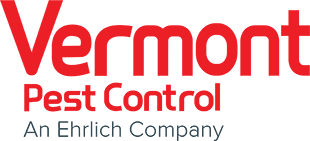Litchi Fruit borer

BPC Pest Control
This type of pest is found plaguing litchi most frequently and inspires the best financial impacts. Females lay eggs independently on the undersurface of the leaf or close to the calyx of litchi natural products. During cold weather months, the leaf buds are liked for oviposition. BPC Pest Control is more important in the controlling procedure.

Newly hatched larvae
Recently incubated hatchlings are smooth white and thin with unmistakable light earthy colored heads. The recently arisen hatchlings begin drilling into the products of the soil on its mash. The swarmed natural products don’t achieve the typical size and can be distinguished by the development of dark spots close to the pedicel. Hatchlings don’t enter a lot further into the mash yet feed beneath the calyx around 15mm profound. When completely developed, they emerge from the leafy foods on the leaf surface. Along these lines, the hatchlings make direct harm to litchi natural products. The mature hatchling begins turning cover, which is generally framed on the old litchi leaf.
Females’ incline toward natural products goes for oviposition. Assuming no organic products are accessible, they are forced to lay eggs on shoots. The endurance race is more on shoots than on natural products. At the time of July, they cause backhanded harm by producing mines in youthful shoots. The youthful hatchlings make mine in the lamina and bore into mid-rib of youthful leaves and passage through it, therefore branches wilt and drop. The irritation has now secured itself as one of the significant bugs of litchi in India, especially in Bihar and Uttar Pradesh.
The executives
- Moths can be barred by encasing the natural product panicles in nylon network packs, however, this is uneconomic in regions with high work costs.
- NRC on Litchi, Muzaffarpur has suggested the utilization of Trichogramma chilis @50000eggs/ha and utilization of pheromone trap, notwithstanding, this pheromone isn’t giving reliable outcomes in every one of the circumstances.
- Fallen organic products ought to be taken out to lessen the development of moths and furrowing might be done after organic product reaping.
- Bearing trees ought to be assessed during the early flush turn of events and showered if important. The leaf flush before blossom inception is vital as it supplies the sugars required for natural product improvement. Youthful, non-bearing trees needn’t bother with being showered. This likewise permits the parasitoids to develop in the plantation.
- Organic products might be reviewed week after week from the natural products set to distinguish eggs of drills, which are tiny and practically imperceptible to the unaided eye. Swarmed organic products ought to be picked and obliterated at invasion levels of 1 to 2 percent. Whenever the irritation turns out to be more dynamic, showering 0.05 percent fenitrothion or dichlorvos or carbaryl 2g/l might be finished.
- Permethrin is applied week after week, as long as about fourteen days before collection. Cypermethrin, deltamethrin, or fenthion during early natural product set is prescribed to forestall harm later in the season.
- Impacted shoots might be eliminated and all agronomic endeavors, for example, furrowing and supplementing the board ought to be done so that flushing happens before the period of September.
- Neem based items might be applied at the hour of new shoot development to stay away from the weighty populace of the bug.
- Monocrotophos 0.05 percent might be applied on account of serious shoot harm.
